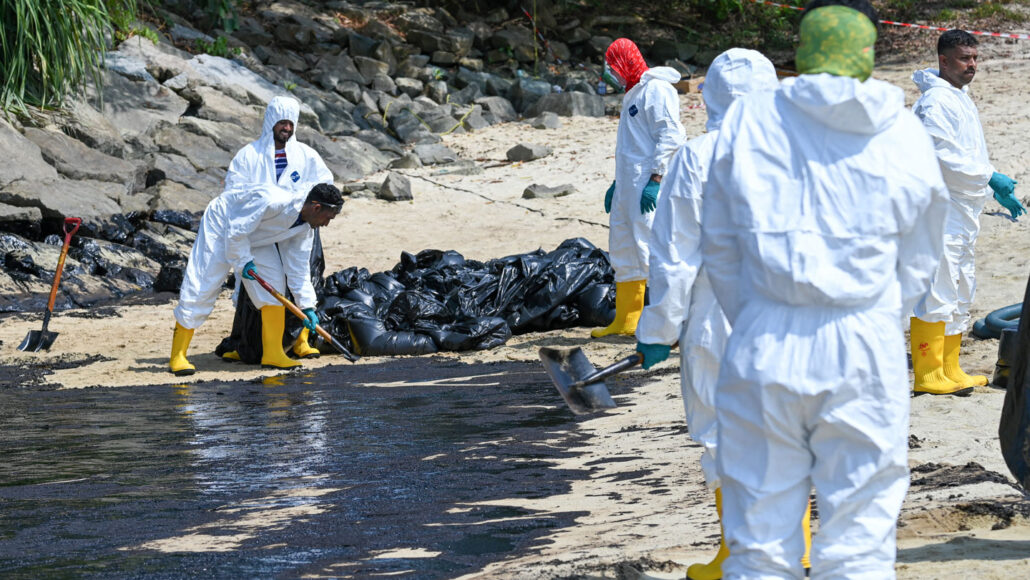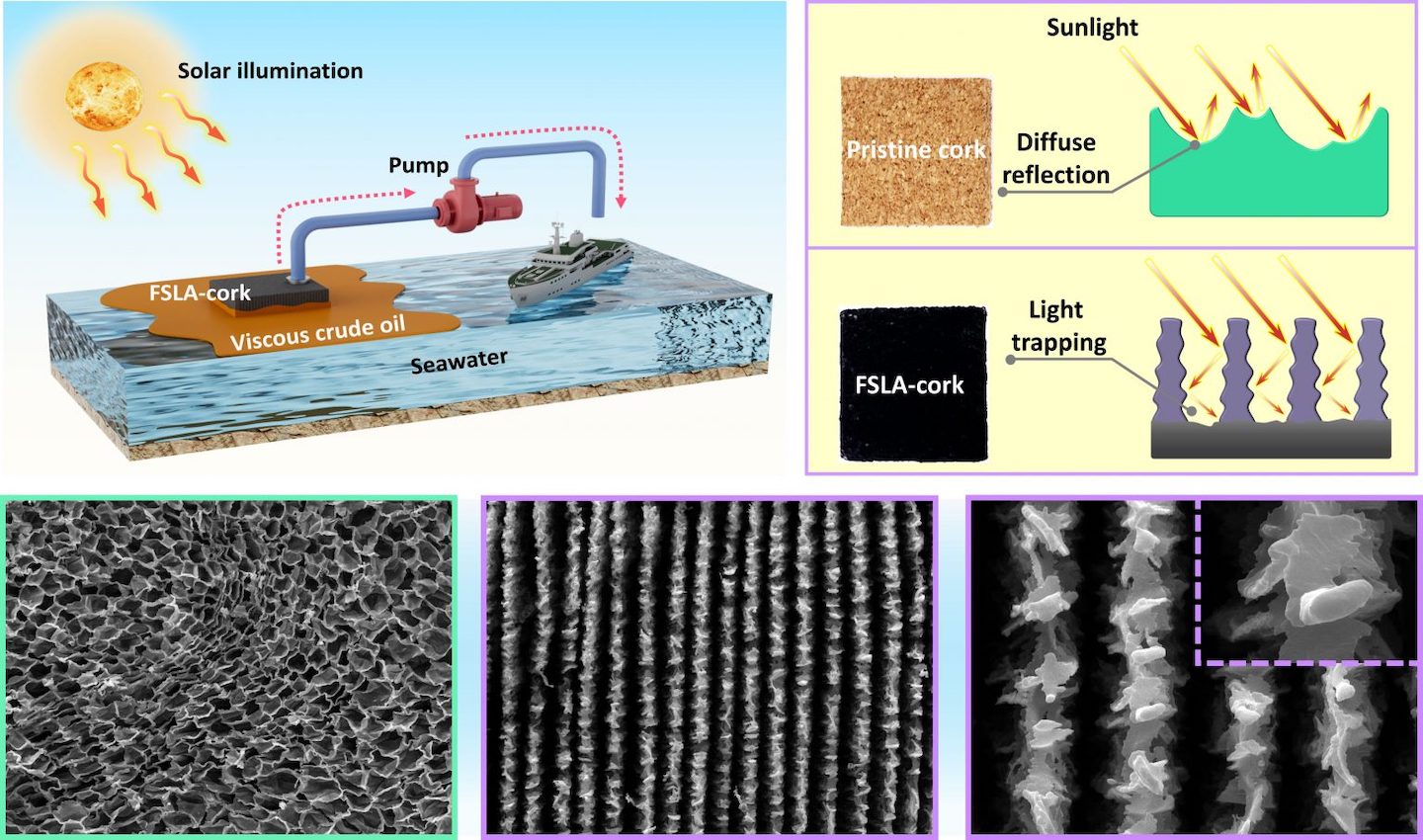Lasers help put the cork on spilled oil
An accidental experiment led scientists to a smart solution for an environmental menace

Workers are seen cleaning up spilled oil from a beach on Singapore’s resort island of Sentosa in June 2024. Oil spilled at a nearby port spread through the water and contaminated beaches.
ROSLAN RAHMAN/AFP via Getty Images Plus
Oil spills at sea pose risks to aquatic life and people. Every year, such toxic spills taint the water at more than 150 U.S. sites alone. Attempts to remove that oil tend to be messy, costly and often not very effective. But scientists in China and Israel think they’ve found a new way to “sponge” up that sticky pollution: cork.
Past research had shown that cork could collect oil, but the process is too slow to seem promising. Treating cork with lasers speeds up the pace at which cork picks up oil — and only oil, reports Yuchun He. Indeed, the treated cork keeps water out. He works at Central South University in Changsha, China. This materials scientist was part of a team that developed the new treatment.
His group described the process in the April Applied Physics Letters.
The new finding “looks terrific,” says Nancy Denslow, “at least in the lab.” Denslow works at the University of Florida College of Veterinary Medicine in Gainesville. There, she studies water contaminants that pose threats to wildlife. The materials don’t cost much, she adds. However, she cautions, right now no one knows how well the treated cork will work on spills outside the lab.
Lasers sensitize cork to light
He’s team stumbled onto the new treatment by accident.
They’d been using lasers to etch patterns into wood. They hoped those patterns might help them build electronic devices from the wood. They’d never tried etching cork (the bark of a particular tree) before. But when they did, something unexpected happened.
The cork darkened. That change suggested the cork might be photothermal — something that can convert light into heat.
They already knew that untreated cork could sop up oil. But it did so very slowly. The problem: Oil is highly viscous, or thick. But oil gets thinner when it warms up. And thinner oil should more easily soak into cork or stick to its surface.
The scientists had a hunch that tiny cavities created by the laser might help the cork store more heat. This treated cork should warm up more quickly than usual in sunlight. And that warmth should thin nearby oil, making it easier for the cork to sop up.
Cleanup duty
One possible treated-cork oil spill cleanup approach is shown (top left). The laser created deep grooves in the cork that can trap heat (top right). Microscope images show pristine cork (bottom left), deep grooves carved in the cork by the laser treatment (middle) and a closeup of the grooves (bottom right).

To test this, they compared small, thin slices of pristine cork to laser-treated cork. In the dark, both corks took about 45 minutes to sop up a mere two droplets of oil. With a camera, the researchers watched as this happened. Then, they repeated the experiment in sunlight and compared the results.
In the sun, untreated cork needed 10 minutes to sop up the oil. Laser-treated cork took just two minutes.
To simulate what would happen outdoors, they next poured oil onto water and watched it float. Then they added some treated cork and shone a sunlamp on it. Heat from the lamp warmed the oil, lowering its viscosity.
The treated cork now sopped the oil up out of the water.
The laser’s role
The laser’s light scuffs the surface of the cork ever so slightly, He’s team shows. This makes the cork extra hydrophobic, or water-repellent. Those scuffs also make the cork more oleophilic (Oh-lee-oh-FILL-ik), or attractive to oil.
The hardest part was testing ways to etch the cork, He says. His team had to balance the cork’s oil, water and photothermal traits. “We need to continuously adjust these three properties,” He says — to get “the best-performing cork.”
The treated cork is an example of something that is adsorbent. It can clean up a spill because the oil now sticks to its surface. (That’s different from absorption, where the polluting particles mix with and enter a material.) “Using [cork materials] as adsorbents can better separate oil and water,” He says.
Oil spills can kill animals, plants and other organisms. Today, cleaning up a spill takes a mix of tools. Often, crews skim oil off the water’s surface as they apply some harsh chemical that aims to break down the oil.
Cork appears to offer a greener alternative. The new tests took place in a lab, so cork cleanup will need to be tested in real-world conditions, too — at sea. That can see if it works on a large scale and without harming aquatic life.
He has high hopes for treated cork. It’s renewable and environmentally friendly. After it’s harvested from a tree, the cork (bark) grows back in about 10 years. So far, no one has tested whether the new cork “sponges” can be reused. “To my knowledge, there are almost no truly reusable oil-absorbing materials,” He says. But even if cork isn’t either, it may still offer a preferred way to clean oil from the environment.
Editor’s note: This article was edited on Sept. 4 to clarify the use of cork materials as adsorbents.







